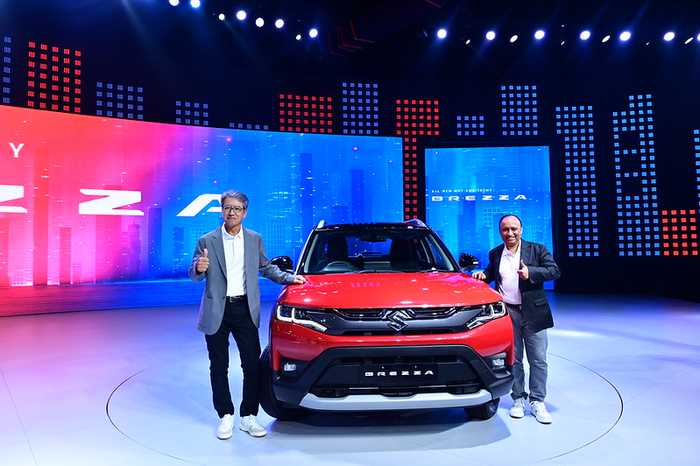Published 13:07 IST, February 7th 2024
Dealer financing among Maruti Suzuki's key Tier-2, Tier-3 strategy: Shashank Srivastava
In last one year, Maruti Suzuki tied up with 7 financial institutions to empower its over 4000 sales outlets across the country.
Advertisement
Maruti's dealership empowerment: Holding over 41 per cent market share presently, Maruti Suzuki remains the country's largest car manufacturer. Strengthening its sales presence, Maruti Suzuki, during the last one year has partnered with as many as seven financial institutions including Indian Bank, IDBI, Cholamandalam and now the J&K Bank. In an exclusive interview with Republic Business, Shashank Srivastava, Senior Executive Officer, Marketing & Sales, Maruti Suzuki India Limited, said growing partnerships with banks is helping the India's largest car maker in ensuring working capital of its over 4000 dealers across the country is met with.

Image credit: Flickr
Advertisement
Stronger pan-India footprint
Supply chain finance or inventory funding, an innovative and modern mechanism for meeting the working capital requirements of Maruti Suzuki’s dealers, stockists, wholesalers, and retailers reflects the automotive makers support to its dealers in ensuring their readiness as per evolving customer and market needs, Shashank Srivastava told Republic Business.
Elaborating on dealer financing mechanism, Srivastava said the partner bank enters into a memorandum of understanding (MoU) with manufacturers, suppliers, and or Original Equipment Manufacturers (OEMs), based on which they can recommend their authorised dealers for availing working capital facility from the bank.
Advertisement

Image credit: Flickr
“As a company, we take pride in the robust dealer network which truly forms the bedrock of our business. We are committed to support our dealers in ensuring their readiness as per evolving customer and market needs,” added Srivastava. The main benefit of the dealership financing to the dealers is relatively lower rate of interest and lesser collateral requirement with regard to normal working capital facilities, digital operations in the account by way of portal access in favour of dealers and suppliers assessment on the basis of purchases from the manufacturer, Nil margin and likewise, he informed.
Advertisement
Referring to the tie-up with J&K Bank, Srivastava said the strategic alliance reinforces Maruti’s long-term association with financial institutions. “These partnerships are useful for leveraging the strength to offer tailored retail finance products and end-to-end working capital solutions, thus marking a significant milestone for both organisations,” Srivastava added. The main benefit to the suppliers is that they get instant credits in their account before the despatch of goods, thus their working capital requirements get considerably reduced, Srivastava added.
Auto sector outlook
Commenting on the road ahead for the auto industry, Srivastava said the sector expects to end the present fiscal with passenger sales to cross the 4.1 million mark. He further added, “The larger base of this year along with the lower pending bookings and the higher network stock means that the growth buffer seen this year will not be there next fiscal,” Srivastava said.
Advertisement

Image credit: Flickr
The sticky inflation also points to elevated retail loan rates next year, he added. “In all possibilities looks like we should see the 4 million mark again being crossed and with the SUV sales past the 2 million mark,” Srivastava added.
He said individual car companies’ performance could help the country surpass the four million PV sales mark. "This will be the first time that Indian domestic PV sales will breach the 4 million mark. With this India will be the third largest PV market in the world,” Srivastava added.
SUVs lead the growth
Till July last year, auto sector had seen skewed production due to the semiconductor components issues. This had resulted in skewed segment-wise inventories, he remarked. "The SUV demand was high but supply was limited resulting in long waiting periods and pending bookings while the stock of smaller cars was higher,” Srivastava added.
Srivastava further said: “Since July with the supply side issues getting more or less resolved we have seen the inventory situation getting corrected,” “We expect this normalised situation to continue in the next fiscal year and inventory levels in line with the basic demand patterns,” he added. Srivastava said with auto sector growth being highly correlated with economic growth, he was bullish on the long-term growth prospects of India's PV industry.
“As I mentioned the Auto sector growth is highly correlated with the economy growth,” he said. “With the economic growth projections for the future around 7 per cent or so and with the increased urbanisation and the lower motorisation penetration in our country we are bullish on the long-term growth prospects of the Indian PV industry,” Srivastava added. “Our projections are that we should see volumes of 6 million annual sales by 2030 suggesting a CAGR rate of 6 per cent plus in the industry,” he added.
16:38 IST, January 25th 2024